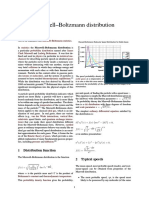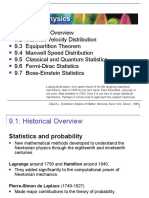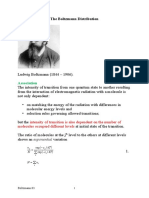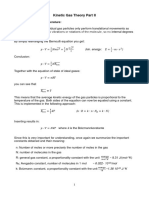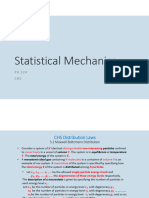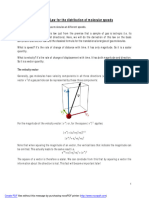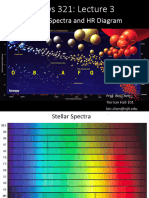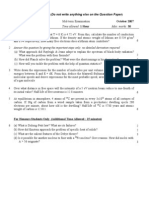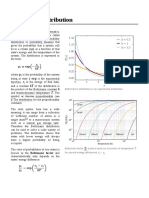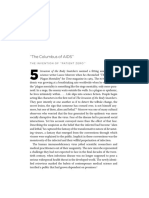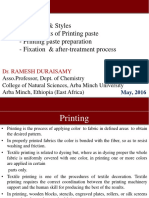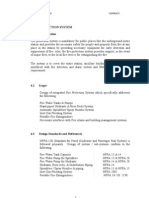0% found this document useful (0 votes)
18 views33 pagesPhys4C Lecture20
The document discusses thermodynamics, focusing on the Boltzmann and Maxwell-Boltzmann distributions, which describe the distribution of energies and speeds of particles in a gas. It explains adiabatic processes in ideal gases and their implications in weather phenomena, such as chinooks. Additionally, it includes examples illustrating the application of these distributions in determining temperature and population inversion in lasers.
Uploaded by
winahyatnoCopyright
© © All Rights Reserved
We take content rights seriously. If you suspect this is your content, claim it here.
Available Formats
Download as PDF, TXT or read online on Scribd
0% found this document useful (0 votes)
18 views33 pagesPhys4C Lecture20
The document discusses thermodynamics, focusing on the Boltzmann and Maxwell-Boltzmann distributions, which describe the distribution of energies and speeds of particles in a gas. It explains adiabatic processes in ideal gases and their implications in weather phenomena, such as chinooks. Additionally, it includes examples illustrating the application of these distributions in determining temperature and population inversion in lasers.
Uploaded by
winahyatnoCopyright
© © All Rights Reserved
We take content rights seriously. If you suspect this is your content, claim it here.
Available Formats
Download as PDF, TXT or read online on Scribd
/ 33


